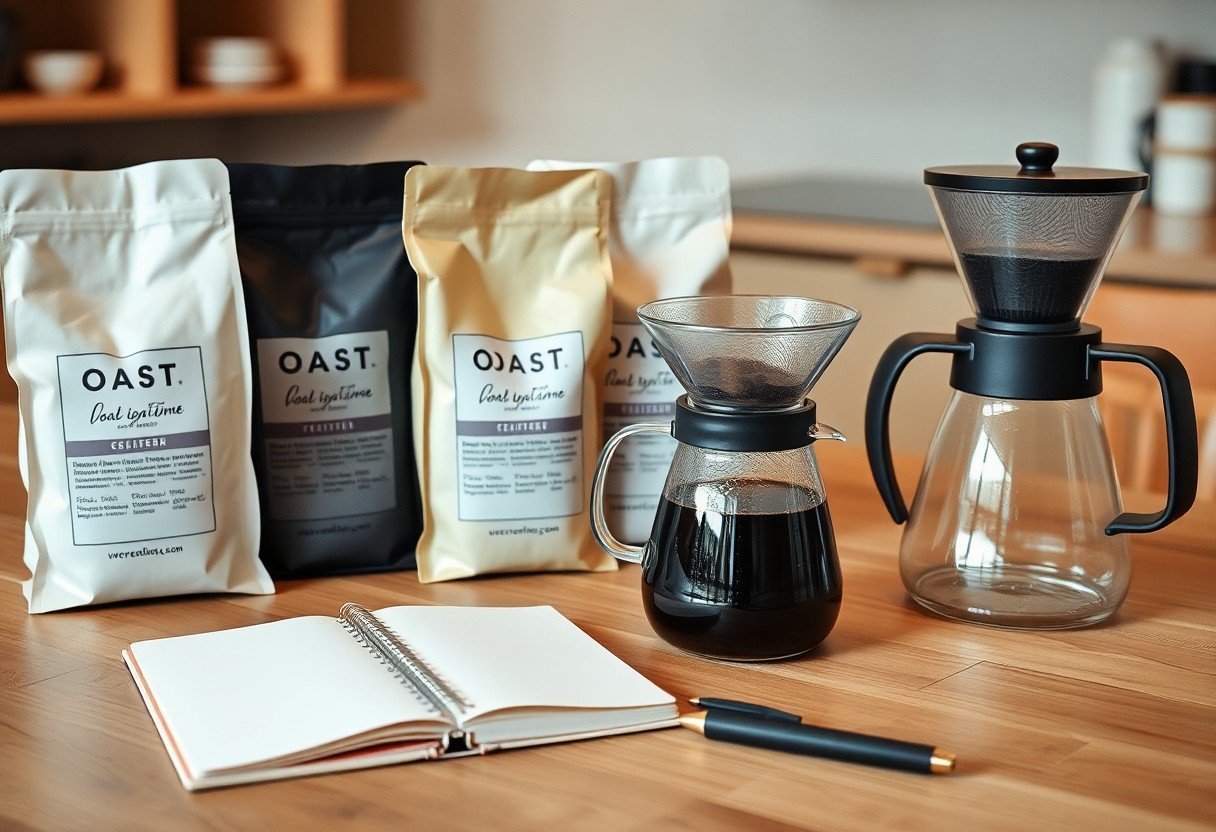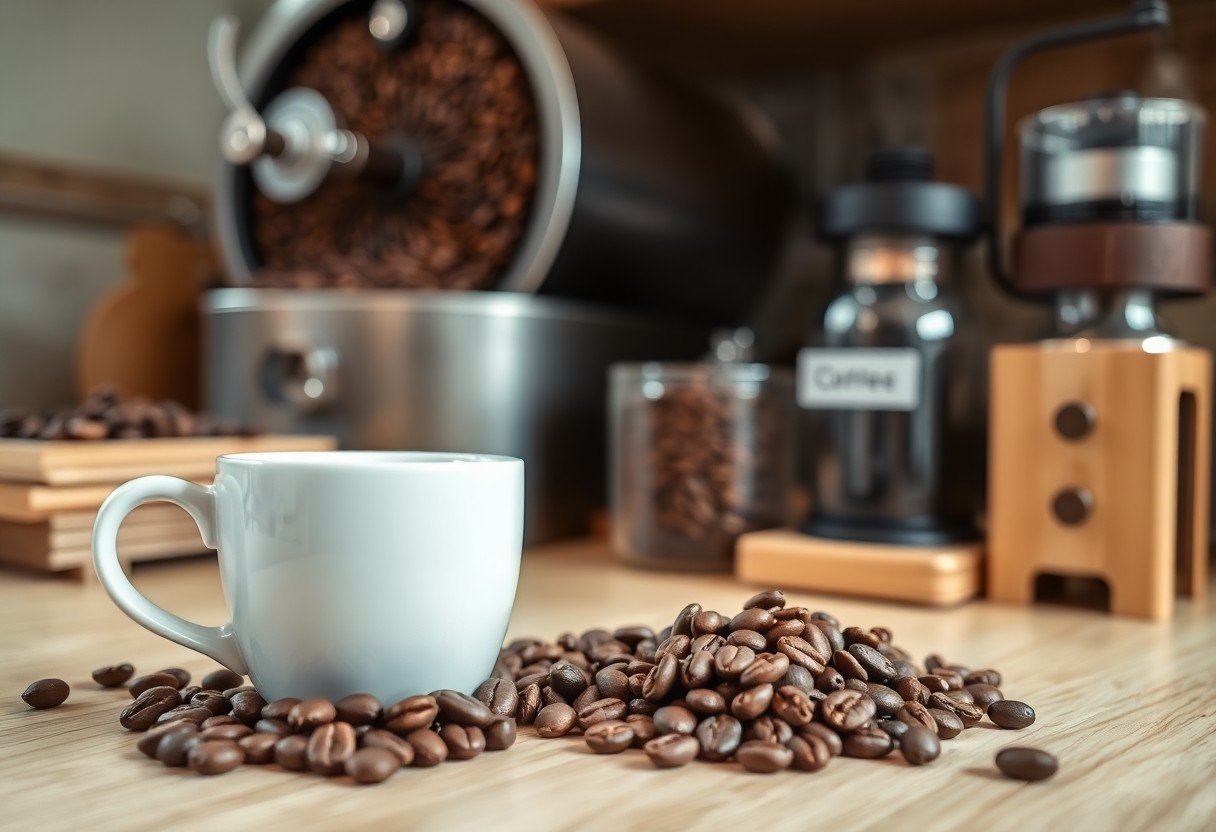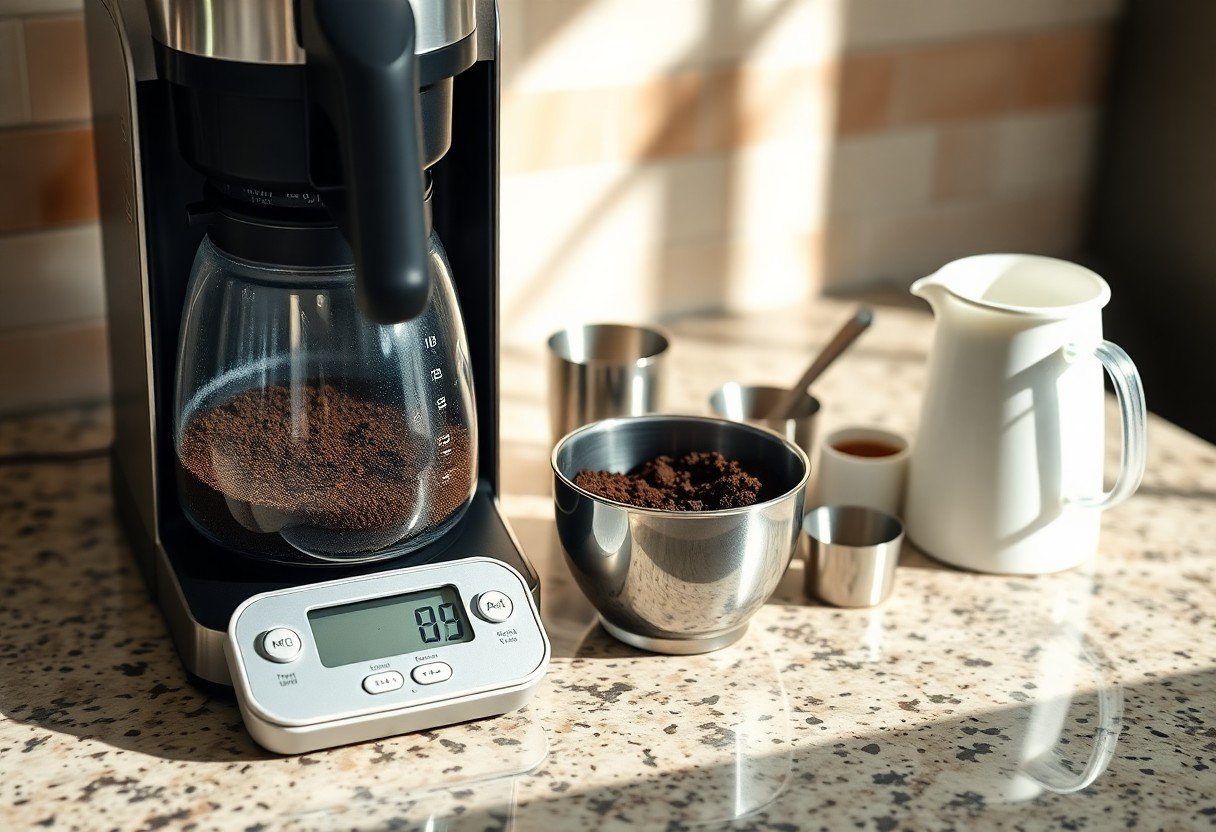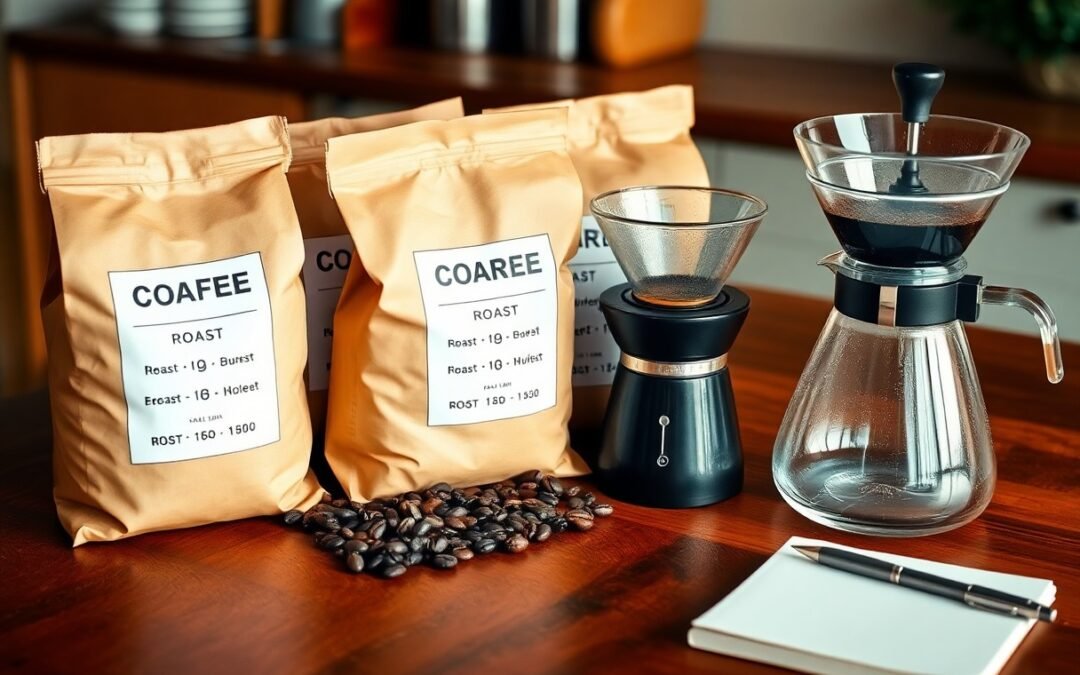With the right techniques and insights from Australian coffee roasters, you can elevate your home brewing experience to new heights. This guide provides you with important tips and tricks that will enhance your coffee-making skills, ensuring you extract the maximum flavor from your beans. Whether you’re a novice or looking to sharpen your expertise, these expert-backed recommendations will help you create cafe-quality brews right in your kitchen.

Mastering the Coffee Bean Selection Process
Understanding Single Origin vs. Blends
Single origin coffees come from a specific region, country or even a single farm, allowing you to experience unique flavors that are characteristic of that particular area. These beans often offer a taste profile that highlights the terroir, or the environmental conditions, such as soil type and climate, influencing their growth. For instance, Ethiopian Yirgacheffe is renowned for its floral and fruity notes, whereas Colombian coffee typically offers a balanced and nutty flavor. Selecting single origin coffees allows you to explore the diverse nuances of coffee culture globally.
In contrast, blends combine beans from different origins to create a consistent flavor profile, balancing out the individual characteristics to yield something harmonious. This approach can result in a richer and fuller cup, appealing to those who prefer a specific taste experience. Blends allow roasters to maintain quality and flavor consistency, even when harvest yields vary. For example, a well-crafted espresso blend may incorporate beans from Brazil for sweetness, Guatemalan beans for brightness, and Indonesian coffee for depth, creating a well-rounded shot that you can enjoy every time.
Identifying Beans with Optimal Flavor Profiles
Flavor profiles are influenced by various factors, including the coffee bean variety, elevation at which they’re grown, and processing methods used post-harvest. Familiarize yourself with common flavor notes associated with different bean types. For example, Arabica beans tend to be sweeter and more complex, while Robusta can have a stronger, more bitter taste. Understanding these characteristics allows you to select beans that align with your preferences. Additionally, keep an eye on the roast level; light roasts often showcase the origin’s unique flavors, while dark roasts tend to emphasize the roast itself.
Take the time to explore tasting notes provided by roasters; these can guide your selection process. Look for profiles that resonate with your palate—be it fruity, nutty, chocolaty, or floral. Sample a variety of beans to discover what you enjoy. Utilizing resources like cupping sessions and local coffee tastings can provide firsthand experience and insight into the flavor spectrum available in different beans. Engaging with local roasters can also lead you to limited releases and unique offerings.
Focusing on optimal flavor profiles involves narrow consideration of the bean’s species, processing methods, and roast levels, allowing for tailored selections. For example, you may prefer washed coffees that yield a cleaner cup, granting clarity to the flavors. Explore the aroma and taste through different brew methods, such as pour-over, French press, or espresso, to identify how these factors affect the overall taste. Engaging in this exploration helps refine your palate, ensuring that each cup you brew at home meets your expectations and satisfies your coffee cravings.

The Perfect Roast: Elevating Your Coffee Game
Home Roasting Techniques to Try
Experimenting with different roasting profiles can drastically enhance your coffee’s flavor. Start with a basic stovetop popcorn popper; it offers excellent control over the roast level. Aim for the first crack, where beans begin to expand and shed their outer skin, indicating light to medium roasts. If you’re after a darker roast, listen for the second crack, which provides deeper, bolder flavors. Take meticulous notes on your roasting times, temperatures, and the bean types you use to refine your process over time.
Consider utilizing a specialty home roasting machine for more consistency. Many of these machines come equipped with built-in profiles and the ability to adjust heat levels and airflow. Additionally, keeping an eye on the beans’ coloration during the roast will help you distinguish between varying roast levels, allowing you to tailor to your taste preferences. The goal is to unlock the unique flavor notes present in each type of coffee bean.
Choosing the Right Equipment for Consistent Results
Your roasting journey can only be as successful as the equipment you choose. A high-quality green coffee bean roaster will play a pivotal role in ensuring consistency and achieving the flavors you desire. For home use, electric roasters often provide better control and uniformity compared to stovetop methods. Brands like Behmor and Hottop offer excellent options that allow for precise temperature adjustments and profiles. Always opt for a model that includes a built-in cooling feature, as stopping the roast quickly is crucial to achieving the right flavor profile.
Investing in a reliable grinder is equally important. A burr grinder will provide a uniform grind size, crucial for even extraction during brewing. Look for grinders with adjustable settings to accommodate different coffee brewing methods, from French press to espresso. By ensuring a consistent grind, you can significantly enhance the overall cup quality you achieve at home.
Prioritize equipment that fits your personal brewing style and preferences. If you enjoy roasting small batches, a home machine with a capacity of around 250 grams might suit you best. Those who prefer larger quantities for sharing or bulk brewing may want to consider models that accommodate up to one kilogram or more. Understanding your typical usage will guide your purchasing decisions and lead to better home roasting experiences.
Brewing Methods That Deliver Barista-Quality Results
Exploring the Various Brewing Techniques
Varying your brewing technique can lead to distinctive flavor experiences, each method emphasizing different attributes of the beans. Whether you opt for espresso, pour-over, French press, or AeroPress, each method has unique characteristics that cater to diverse taste preferences. Experimenting with these techniques grants you the flexibility to highlight the intricate notes hidden within your beans, ensuring a personalized cup every time.
For instance, a pour-over method allows for greater control over water flow and extraction time, producing a clean and vibrant cup. In contrast, a French press delivers a fuller body and rich texture due to its immersion brewing style, capturing the oils and sediment of the coffee. Engaging with these techniques enhances your understanding of how brew time, water contact, and pressure can transform your coffee experience.
Brew Method Comparisons
| Method | Characteristics |
| Espresso | Rich, concentrated, requires fine grind and high pressure. |
| Pour-Over | Clean, vibrant flavors, allows for precise control over extraction. |
| French Press | Full-bodied, textured, utilizes immersion brewing. |
| AeroPress | Versatile, can mimic espresso or drip methods, quick and easy. |
Fine-Tuning Your Brewing Variables: Grind Size and Water Temperature
Adjusting your grind size and water temperature directly influences the extraction rate, impacting the overall flavor profile of your brew. A finer grind exposes more surface area to the water, leading to quicker extraction; perfect for espresso but too fine for methods like French press, which benefit from a coarser grind. Testing these variables allows you to achieve a balanced cup with the right flavor intensity.
Water temperature also plays a pivotal role in extraction. Ideal temperatures range between 90°C and 96°C (194°F to 205°F). Too hot can scorch your coffee, while too cold leads to under-extraction, resulting in sour notes. Striking the right balance between these elements is key to replicating the barista-quality coffee you desire.
Grind Size and Water Temperature Overview
| Grind Size | Considerations |
| Coarse | Best for immersion methods like French press or cold brew. |
| Medium | Suitable for drip coffee makers and pour-over methods. |
| Fine | Ideal for espresso and AeroPress with shorter brew times. |

The Art of Flavor Balance: Adjusting Brew Ratios
Understanding Coffee-to-Water Ratios
Achieving the right coffee-to-water ratio is fundamental in crafting a balanced brew. A common guideline is the 1:16 ratio, meaning for every gram of coffee, you should use 16 grams of water. This ratio can be adjusted based on your taste preferences and the brewing method. For instance, espresso typically uses a 1:2 to 1:3 ratio, yielding a much denser flavor profile, while a pour-over can utilize a more diluted ratio to highlight acidity and brightness in lighter roasts.
Start by weighing your coffee and water with a scale for precision. Experimenting with these ratios can yield drastically different flavor outcomes. A stronger brew may enhance boldness, but too much coffee can overpower the subtler notes in the beans. Use your palate as a guide, adjusting slowly until you find the balance that suits your taste.
Experimenting to Discover Your Perfect Cup
Your taste buds are unique, and discovering your ideal coffee balance involves experimentation. Start with the standard ratio, but feel free to modify it incrementally. For instance, if you find your cup too weak, try reducing the amount of water slightly or increasing the coffee. Keep notes on each variation and make observations about flavor changes, body, and acidity. This process can lead you to develop a signature brew that reflects your personal preferences.
Over time, you may notice that specific brewing methods interact differently with various types of beans. A darker roast might shine with a higher coffee ratio in a French press, while a lighter roast could benefit from more water in a pour-over. Pay attention to brew time and temperature as well—they significantly influence extraction and, thus, flavor. As you adjust these variables, you bring together different dimensions of flavor, unlocking the full potential of your coffee.
Discovering your perfect cup of coffee isn’t just about ratios; it’s an ongoing journey. Engage with your coffee through different variables—water temperature, grind size, and brewing duration—all while tracking their effects on flavor dynamics. Elevate your coffee at home with 5 easy tips from the 2025 Elevate your coffee at home with 5 easy tips from the 2025 … experience. Each trial and error will not only refine your preferences but also enhance your understanding of the artistry behind brewing great coffee.
Troubleshooting Common Home Brewing Issues
Identifying Flavor Defects and Their Causes
Flavor defects in your brew can stem from various factors, from bean quality to extraction methods. A burnt or bitter taste often indicates over-extraction caused by too fine a grind or prolonged brewing time. Conversely, a sour flavor typically points to under-extraction, where the coffee grounds are too coarse or the brewing time is insufficient. Take note of these sensations and adjust accordingly to fine-tune your process.
Additionally, the freshness of your coffee beans plays a pivotal role in flavor development. Stale beans tend to lack vibrancy and can introduce off-flavors. Aim to use freshly roasted coffee within two to four weeks for optimal taste, and keep your beans sealed and stored in a cool, dark place to maintain quality.
Adjusting Your Technique for Consistent Quality
Consistency in your brewing technique is imperative for achieving the best flavor profile. Start by measuring your coffee and water precisely; a common ratio is 1:15 coffee to water, which allows you to adjust easily based on your taste preference. Utilize a scale for accuracy, and ensure your grind size remains uniform for even extraction, which helps prevent both bitter and sour notes in your cup.
Incorporating a brewing method that suits your taste can elevate your results. Experiment with different brewing devices such as pour-over, Aeropress, or French press, as each method presents unique extraction characteristics. Maintain a consistent water temperature around 90-95°C, and monitor brewing times carefully as even slight variations can significantly affect your coffee’s flavor profile.
Final Words
Taking this into account, you now have a solid foundation to approach home brewing like a true professional, drawing inspiration from the expertise of Australian coffee roasters. By understanding the nuances of bean selection, grind size, and brewing methods, you can elevate your coffee-making experience and create brews that rival your favorite café. Embrace the experimentation process, as it will lead to discovering your unique flavor preferences and perfecting your craft.
Utilizing the tips and techniques shared by seasoned roasters not only enriches your knowledge but also enhances your overall coffee enjoyment. As you refine your brewing skills, make it a habit to seek out quality beans, maintain your equipment, and be mindful of water temperature and extraction times. With practice and dedication, your home brewing journey will transform, allowing you to savor each cup with confidence and pride.
FAQ
Q: What is the first step in home brewing coffee like a pro?
A: Start with selecting high-quality coffee beans. Look for freshly roasted beans from reputable Australian coffee roasters to ensure the best flavor profile in your brew.
Q: How does water quality affect the brewing process?
A: The taste of your coffee is significantly influenced by water quality. Use filtered water to avoid impurities and ensure the best extraction of flavors from the coffee grounds.
Q: What brewing methods can enhance the coffee flavor?
A: Methods such as pour-over, French press, or espresso can enhance flavor. Each method extracts different characteristics, so choose based on your preferred taste profile.
Q: How important is coffee grind size in brewing?
A: Grind size is important; it affects extraction time and flavor. Use a grinder to achieve a consistent grind suited for your chosen brewing method, with coarser for French press and finer for espresso.
Q: What tips can help maintain equipment for optimal brewing?
A: Regularly clean your brewing equipment with warm water and mild detergent to remove oils and residues. This practice helps maintain the integrity of flavors in your coffee.

